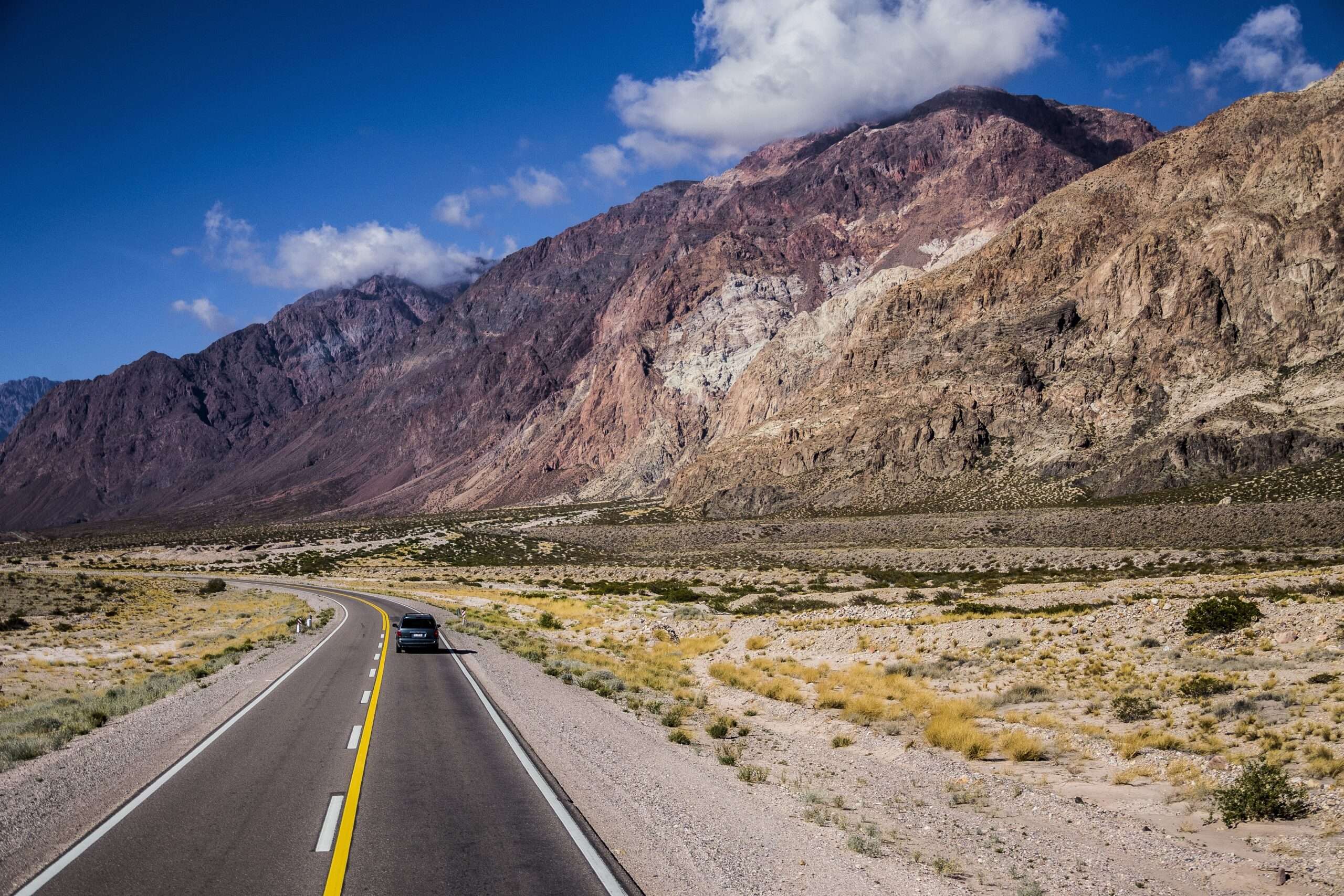Chile’s history is woven with tales of ancient civilizations, Spanish conquests, and struggles for independence, shaping the country into the vibrant tapestry it is today.
The influence of indigenous cultures, European settlers, and immigrant communities has left an indelible mark on Chilean society, reflected in its art, architecture, and cuisine.
Modern-day Chile is a dynamic blend of old-world charm and contemporary innovation. Bustling cities like Santiago and Valparaíso pulse with energy, offering a juxtaposition of historic landmarks, modern skyscrapers, and eclectic street art. Meanwhile, rural communities maintain age-old traditions, preserving the heritage of the land and its people.
For nature enthusiasts, Chile is a playground of unparalleled beauty. From the otherworldly landscapes of the Atacama Desert, where lunar-like valleys meet expansive salt flats, to the pristine lakes and snow-capped volcanoes of the Lake District, the country’s natural wonders never cease to amaze. Adventurers can trek through the rugged terrain of Torres del Paine National Park, explore ancient forests in Chiloé, or marvel at the enigmatic Moai statues on Easter Island.
Chile’s allure extends beyond its physical landscapes. Its warm and welcoming people, known for their hospitality and resilience, offer visitors a glimpse into the heart and soul of the nation. Whether savoring a hearty bowl of cazuela at a local eatery, dancing to the rhythm of traditional music at a fiesta, or simply soaking in the breathtaking vistas of the Andes, every moment in Chile is an invitation to experience life in all its richness.
In this travel guide, we invite you to embark on a journey of discovery through Chile’s enchanting landscapes, vibrant cities, and cultural treasures. Whether you’re a thrill-seeker in search of adrenaline-fueled adventures, a history buff eager to unravel the mysteries of the past, or a food lover craving culinary delights, Chile promises an unforgettable experience at every turn. So pack your bags, open your heart to new experiences, and let Chile’s boundless beauty captivate your soul. ¡Bienvenidos a Chile! (Welcome to Chile!
Regions and Cities of Chile
Chile is divided into various regions, each offering unique landscapes, cultural experiences, and attractions for visitors to explore. Here’s an overview of some of the key regions and cities in Chile:
Santiago Metropolitan Region: The capital city of Santiago is located in this region, serving as the political, cultural, and economic hub of Chile. Visitors can explore historic neighborhoods like Bellavista, visit museums and art galleries, and enjoy the vibrant culinary scene.
Get the traveller Guides book by clicking on the link https://www.amazon.com/Discovering-Chile-Travelers-Guide-International-ebook/dp/B0CVNDJ6ZT
Valparaíso Region: Valparaíso, a UNESCO World Heritage Site, is a colorful port city known for its steep hillsides, charming streets, and stunning views of the Pacific Ocean. Visitors can ride the historic funicul
ars, admire the street art, and explore the bohemian atmosphere of this eclectic city.
Atacama Region: The Atacama Desert, one of the driest places on Earth, is located in this region. Visitors can explore otherworldly landscapes, such as the Moon Valley and the Atacama Salt Flats, and stargaze at some of the clearest skies in the world.
Coquimbo Region: This region is known for its beautiful beaches, picturesque fishing villages, and fertile valleys. La Serena, the region’s capital, boasts colonial architecture, a vibrant nightlife, and access to the Elqui Valley, famous for its pisco production and stargazing tours.
Araucanía Region: Located in southern Chile, the Araucanía Region is known for its stunning natural beauty, including lakes, volcanoes, and national parks. The city of Temuco serves as a gateway to attractions like Conguillío National Park and the Mapuche indigenous communities.
Los Lagos Region: The Lake District, or Los Lagos Region, is characterized by lush forests, crystal-clear lakes, and snow-capped volcanoes. Puerto Varas and Puerto Montt are popular starting points for exploring the region’s natural wonders, including Chiloé Archipelago and the Osorno Volcano.
Aysén Region: This remote and sparsely populated region is a paradise for outdoor enthusiasts, with glaciers, fjords, and rugged landscapes waiting to be explored. The town of Coyhaique serves as a gateway to attractions like the Marble Caves and Queulat National Park.
Magallanes Region: Located in Chilean Patagonia, this region is known for its dramatic scenery, including towering mountains, glaciers, and fjords. Punta Arenas, the region’s capital, offers access to attractions like Torres del Paine National Park and Tierra del Fuego.
These are just a few highlights of the diverse regions and cities that make Chile a fascinating destination for travelers. Each area offers its own unique charm, history, and natural beauty, inviting visitors to explore and discover the many wonders of this captivating country.
History of chile
The history of Chile is a rich tapestry of indigenous cultures, colonial conquest, independence struggles, political upheavals, and economic transformations. Here’s an overview of key events and periods in Chilean history:
Pre-Columbian Period:
Before the arrival of the Spanish in the 16th century, Chile was inhabited by indigenous peoples such as the Mapuche, Aymara, and Atacameño.
These indigenous groups had established advanced societies with sophisticated agricultural techniques, social structures, and cultural traditions.
Spanish Conquest and Colonial Rule:
Spanish explorer Diego de Almagro first explored the region in 1535, followed by Pedro de Valdivia in 1540, who founded Santiago in 1541.
Chile became a Spanish colony known as the Captaincy General of Chile, governed from Peru.
The Spanish imposed their language, religion (Catholicism), and laws on the indigenous population, leading to conflicts and resistance.
Independence Movement:
Chilean independence was influenced by the broader Latin American independence movement led by figures like Simón Bolívar and José de San Martín.
The Chilean War of Independence began in 1810 with the establishment of a national junta in Santiago.
After years of military campaigns and political maneuvering, Chile officially declared its independence from Spain on February 12, 1818, under the leadership of Bernardo O’Higgins and José de San Martín.
Republican Era:
The early years of independent Chile were marked by political instability, including conflicts between liberals and conservatives.
The Chilean Constitution of 1833 established a centralized presidential republic, laying the foundation for Chile’s political system.
Economic growth and industrialization expanded in the late 19th century, driven by mining, agriculture, and exports such as copper and nitrates.
War of the Pacific:
In the late 19th century, Chile fought the War of the Pacific (1879-1884) against Peru and Bolivia over control of nitrate-rich territories in the Atacama Desert.
Chile emerged victorious and expanded its territory, gaining valuable mineral resources and access to the Pacific Ocean.
20th Century:
The 20th century saw periods of political instability, including military coups, authoritarian rule, and social unrest.
In 1970, Salvador Allende of the Socialist Party was elected president, leading to a period of socialist reforms known as the “Chilean Revolution.”
Allende’s government was overthrown in a military coup led by General Augusto Pinochet in 1973, leading to a brutal dictatorship that lasted until 1990.
Chile transitioned to democracy in the 1990s, with the election of Patricio Aylwin as president and the establishment of a coalition government led by the center-left Concertación.
Contemporary Period:
Chile has experienced significant economic growth and social progress in recent decades, becoming one of Latin America’s most stable and prosperous countries.
However, social inequality, indigenous rights, and environmental concerns remain ongoing challenges facing Chilean society.
In 2020, Chileans voted overwhelmingly in favor of drafting a new constitution, reflecting ongoing demands for social and political change.
Throughout its history, Chile has experienced periods of triumph and turmoil, shaping its identity as a resilient and dynamic nation in South America.
Conclusions
In conclusion, the history of Chile is a multifaceted narrative that spans centuries of indigenous cultures, colonial conquest, independence struggles, political upheavals, and economic transformations. From the pre-Columbian period marked by the rich traditions of indigenous peoples to the Spanish conquest and colonial rule, Chile’s story is one of resilience, resistance, and adaptation.
The struggle for independence in the early 19th century ushered in a new era of republican governance, laying the foundation for Chile’s political system and setting the stage for economic growth and industrialization in the late 19th and early 20th centuries. However, this period was also marred by conflicts such as the War of the Pacific and periods of political instability.
The 20th century brought significant challenges and changes to Chile, including military coups, authoritarian rule, and social unrest. The legacy of the Pinochet dictatorship continues to shape Chilean society, even as the country transitioned to democracy in the 1990s and embarked on a path of economic development and social progress.
Today, Chile stands as a beacon of stability and prosperity in Latin America, with a thriving economy, democratic institutions, and a rich cultural heritage. However, persistent challenges such as social inequality, indigenous rights, and environmental concerns remind us that the story of Chile is still unfolding, with its people striving for a more inclusive and sustainable future.
As Chile moves forward, it continues to grapple with its complex history while embracing opportunities for progress, innovation, and social justice. Through ongoing dialogue, reconciliation, and collective action, Chileans are shaping their nation’s destiny and reaffirming their commitment to building a brighter tomorrow for generations to come.


[…] Discovery Chile: A traveller Guides […]
[…] So, as you embark on this transformative journey, I encourage you to approach it with an open heart and a willingness to embrace change. Together, let’s unlock the full potential of our minds, bodies, and spirits and embark on a path toward optimal wellness. The adventure awaits—let’s dive in and discover the joy of living life to the fullest. […]
[…] Chile Travel Guide […]
[…] Chile Travel Guide Book […]
[…] Discovery Chile: A traveller Guides […]
[…] Refreshing and nutritious, tiger nut juice is enjoyed chilled over ice and can be consumed on its own or used as a base for various smoothies and drinks. […]